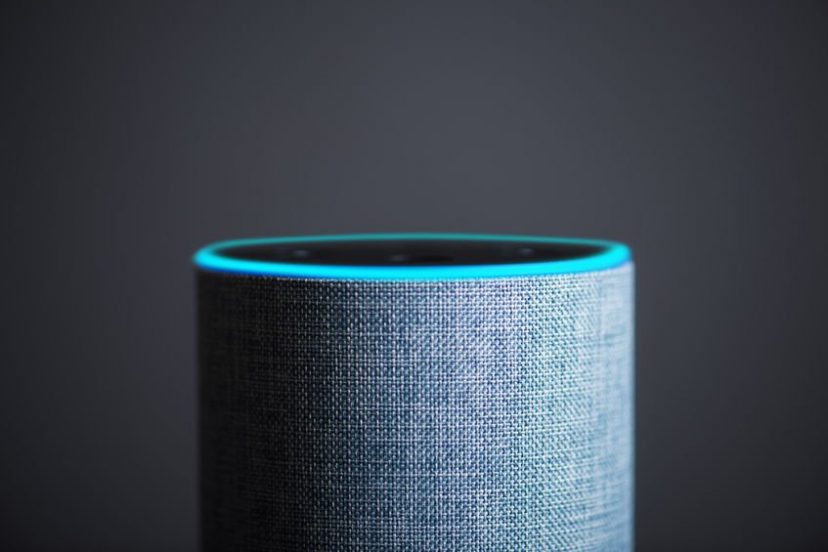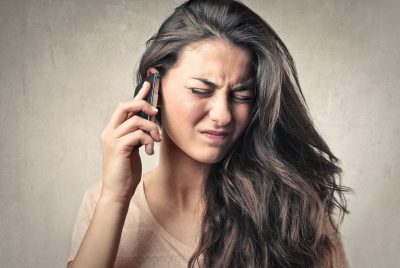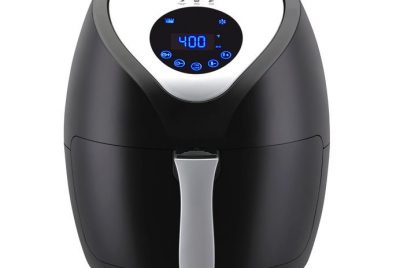On April 3, 1973, the first mobile phone was created. Since then, cell phone technology has…
Amazon Echo Radiation: Should You Be Concerned?

*We may earn a commission for purchases made using our links. Please see our disclosure to learn more.
Alexa, do you produce radiation?
Hmm… I’m not sure.
Alexa may be able to give you a recipe for pancakes or provide a rundown of the day’s news. But if you’re curious about the radiation produced by your Amazon Echo or another digital home assistant, the answer is a little more difficult to come by than simply asking the device. In this guide, we will take a look at the type of radiation produced by these home assistants and what the potential health risks are. We will also briefly compare the radiation levels of a few different types of assistants, and offer up some tips for reducing your exposure.
Home assistants and radiation
The first step towards figuring out if your Echo produces radiation is to narrow it down. What type of radiation?
We will briefly discuss the types of radiation here, but if you are looking for a more in-depth explanation, see EMF Radiation: Everything You Need To Know.
There are two primary categories when it comes to radiation: ionizing and non-ionizing. Ionizing radiation is, perhaps, the more commonly thought of type. This radiation has a large amount of energy bundled up in its rapidly moving waves, and in large enough quantities, it is known to cause serious damage to a person’s health. Radiation poisoning, cancer, birth defects, and even death can all be traced back to high levels of ionizing radiation exposure. Nuclear bombs and the fallout from a meltdown (think Chernobyl) are examples of high amounts of ionizing radiation.
More commonly, we are exposed to smaller amounts, such as from the sun or a medical x-ray. Some older electronics, such as cathode ray television sets, also produced small amounts of ionizing radiation. This is less common today, however. Your Amazon Echo or other home assistant does not generate this type of radiation.
Non-ionizing radiation, meanwhile, is a much lower energy form of radiation. It behaves differently than its ionizing counterpart, with waves that are much longer and less energetic. We talk a lot about non-ionizing EMF radiation on this site. There is RF-EMF radiation, which is produced by devices that send out a wireless signal. And then there is ELF-EMF radiation, which is generally created by electricity.
Both RF and ELF-EMF radiation are recognized as possibly carcinogenic to humans by the World Health Organization’s International Association for Research on Cancer. They have also been linked to issues such as male infertility and Electromagnetic Hypersensitivity.
Now, consider what you just learned about EMF radiation. RF-EMF radiation is present in devices that use wireless signals, including WiFi. The Echo, meanwhile, relies on a connection to your home’s wireless network in order to properly function. There is no ethernet port, so WiFi is the only way to connect the device to the internet. Therefore, we can safely assume that the Echo is going to produce some degree of RF-EMF radiation.
Likewise, the Echo is an electronic device, so it is also possible that it generates some amount of ELF-EMF radiation, as well.
Is EMF radiation from home assistants regulated?
In the United States, RF-EMF radiation is regulated to an extent. The FCC sets limits that state what Specific Absorption Rate (SAR) level a device falls under, and manufacturers test their products to ensure they stay below that amount.
SAR refers to the amount of radiation absorbed by human tissue. It’s not a perfect measurement unit, by any means. For one, the regulations were last revisited in 1996, so they fail to take into account the past 25 years of data. They also perform tests based on the exposure levels of an “average-sized” adult male. So if you are on the smaller side, or concerned with radiation and children, SAR may not be the most reliable safety score.
We go into more detail about SAR levels and testing in Cell Phones and SAR. For now, suffice it to say that, while flawed, SAR levels at least give us some kind of benchmark for the amount of radiation produced by a device.
Amazon certifies that the Echo falls within the FCC’s legal limits, provided it is used as directed. They note that in order for users to keep their RF-EMF exposure at a safe level, they must maintain at least 20 centimeters (or just shy of eight inches) between themselves and the device. Any closer than this and the exposure level can become too high and fall outside of the limits set by the FCC.
For the most part, it isn’t too hard to create this much space between you and your Echo. Unless you speak directly into the device, you probably already provide the Echo with that much distance without even realizing it. The exception to this rule is if you have little ones at home. They may pick the device up and speak into it, thus coming in much closer proximity than eight inches.
The Echo, Dot, and Google Nest Mini comparison
EMF radiation levels of the Echo and other digital assistants are not readily available. With that in mind, we decided to perform a test using a TriField TF2 EMF meter. For this test, we used three devices: a first-generation Amazon Echo, a first-generation Amazon Dot, and a first-generation Google Nest Mini. Of course, there are many different types of digital assistants out there, and your mileage may vary. After the results, we will describe the testing protocol so you can repeat the test on whatever generation of digital assistant you have at home.
These were the results:
Amazon Echo (1st gen)
Device asleep, up-close measurement: .370 mW/m2
Device asleep, distant measurement: .040 mW/m2
Device awake, up-close measurement: .434 mW/m2
Device awake, distant measurement: .024 mW/m2
Electric field: 710 V/m
Magnetic field: .2 mG
Google Nest Mini (1st gen)
Device asleep, up-close measurement: .740 mW/m2
Device asleep, distant measurement: .036 mW/m2
Device awake, up-close measurement: .781 mW/m2
Device awake, distant measurement: .043 mW/m2
Electric field: 375 V/m
Magnetic field: .8mG
Amazon Dot (1st gen)
Device asleep, up-close measurement: 1.325 mW/m2
Device asleep, distant measurement: .877 mW/m2
Device awake, up-close measurement: 1.499 mW/m2
Device awake, distant measurement: .928 mW/m2
Electric field: 464 V/m
Magnetic field: 2.7mG
For our test, we measured each device separately. We first took a measurement without the device in active listening mode. Then, we repeated the measurement after waking the device up. For each device state, we took two measurements: one with the TF2 held directly next to the device, mimicking the levels if you were to speak directly into it. Then, we took another measurement from about ten inches away. We also measured the electric and magnetic field directly next to the device.
Possible flaws of the testing method include the placement of the digital assistant around other electronics. The Dot’s surprisingly high results (at least in comparison to the Echo,) could have been due, in part, to its proximity to other RF-producing devices.
Is your Amazon Echo safe?
None of the devices caused the TF2 to spike into unsafe levels. In fact, they were pretty impressively low, even up-close, for the Echo and the Nest Mini. The Dot was a bit of a surprise, as you would perhaps think that the smaller device would produce less EMF radiation than its full-sized Echo counterpart. And while that may have been the case with electric field radiation, it was not so with either the magnetic field or RF-EMF radiation at any distance.
Ultimately, however, these devices do not contribute a significant amount to your home’s EMF levels, especially if you maintain a safe distance. That being said, for someone with Electromagnetic Hypersensitivity, even the small amounts of RF-EMF radiation produced by these devices could cause unpleasant health symptoms.
There’s not a simple yes or no answer to the question, is the Amazon Echo safe? It depends on your personal EMF tolerance threshold and the level of risk that you deem acceptable.
Tips for reducing your exposure
We have already covered the number one way you can reduce your radiation exposure from your Amazon Echo or another digital home assistant. That is — keep your distance. With EMF radiation, the exposure levels will always be highest closest to the source. That is called the inverse-square law. So, the more distance you can keep between you and your Echo, the less radiation you will be exposed to.
With that in mind, training your little ones to properly use your digital assistant is a good idea, as well. Make sure they know not to pick the device up or speak directly into it. If that is proving to be a challenge, consider placing the device outside of their reach.
Parting thoughts
Overall, your Amazon Echo is not a significant contributor to your home’s EMF radiation levels. Nonetheless, this device, and others like it, do generate some amount of EMF radiation. If you are highly sensitive, it may be in your best interest not to have one of these devices in your home. Otherwise, maintaining a distance from your assistant is the best way to lower your exposure while still keeping it around.



